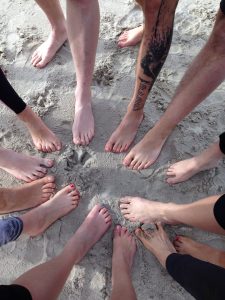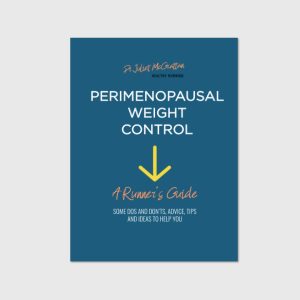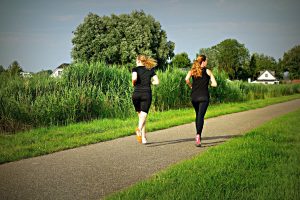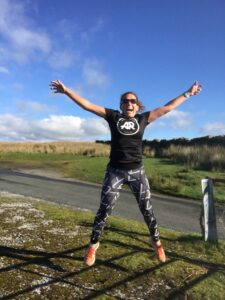There are so many changes to your body when you’re going through the menopause transition. One which is not commonly talked about is noticing a difference in your skin. Anecdotally, many women tell me that alongside noticing some skin sagging and wrinkles, their skin seems to become more delicate and sensitive. This can be a real problem for runners whose skin is regularly exposed to the elements, to friction, to sweat and to frequent washing.
I’ve decided to do a little mini-series looking at the skin changes in perimenopause that can affect us as runners. So far we’ve had:
- Part 1 which covered skin chafing
- Part 2 looking at vaginal atrophy
This is Part 3 and the topic is skin sensitivity.
Whether or not you’ve had sensitive skin in the past, when menopause strikes, you might find it affecting your skin. A small study from The Netherlands found that around 32 per cent of women in peri and post menopause reported increased skin sensitivity. Here are some of the ways menopause skin sensitivity might show up:
- Dry skin
- Itching (known as pruritis)
- Rashes
- Irritation
- Hives
- Spots
- Acne
- Redness
- Chafing
- Increased severity of existing skin conditions such as eczema, psoriasis or rosacea.
What causes skin sensitivity?
In the same way that you might have noticed skin changes when you were pre-menstrual (hello greasy, spotty skin), when your hormone levels start the roller coaster of perimenopause, it can have a direct effect on your skin too. There are oestrogen receptors in the skin and while we don’t fully understand the intricacies of how oestrogen supports skin health, it’s safe to say that oestrogen does help to keep our skin healthy. It helps to keep moisture in the skin, regulate skin oils and stimulate collagen production.
It’s also seems that oestrogen levels can be linked to histamine levels. Histamine is released by mast cells in response to coming into contact with an allergen. The link between oestrogen and histamine and the effect that fluctuating hormone levels can have on some women is not fully understood but may explain why skin allergies, irritation, itching and general sensitivity can increase.
It’s important to remember though that there are many other factors linked to our skin health that are to do with general ageing and not directly related to hormone levels.
These include our:
- Genetics
- Sun exposure
- Environment
- Pollution
- Diet
- Exercise
- Stress levels
- Gut microbiome
- Skin microbiome
Skin changes are very often a reflection of what is going on in our lives. So, in perimenopause, our skin changes might be more to do with our stress levels than our hormonal profile We are all different.
How increased skin sensitivity affects runners
As a runner, increased skin sensitivity can raise all sorts of challenges. You might suddenly notice skin issues arising that haven’t been a problem before. How many of these have you experienced?
- Blisters on your feet even though you’ve previously been fine
- Chafing in your usual running kit
- Slower healing of wounds or irritated areas
- Redness of your face after exercise and that ‘glow’ staying with you for hours
- Hives appearing after an intense workout
- Sweat rashes when it’s not even that hot
- Reacting to your usual post-run skin products.
How to prevent and ease skin sensitivity
Being aware that your skin is likely to change in peri and post menopause is the first important step. Understand that you can’t purely blame your altering hormone levels for all your skin changes. It’s important to address the other issues on the list above such as your sun exposure, diet and stress levels. Spot your own triggers to your skin sensitivity. Is it the weather, your skin products or your emotions? Do what you can to minimise your exposure to your triggers.
Adjust your skin care routine. Pile on the moisturiser. Switch to hypoallergenic products. Take cooler showers. Use skin protecting lubricants before a run.
Keep as cool as possible when you run; that extra sweat will just add to skin sensitivity. Wear layers that are easy to strip off. Choose light and breathable fabrics and avoid kit with a high risk of chafing. You might need a bit of trial and error, like you did when you were a newbie runner.
See your doctor about any skin lesions, changing moles and new skin changes which aren’t going away.
If you’ve enjoyed this post, you’ll love my weekly tips and motivation for menopausal runners. Join hundreds of other women by signing up to get my newsletter below. Or why not sign up for my Run Through the Menopause course? You can start today!







